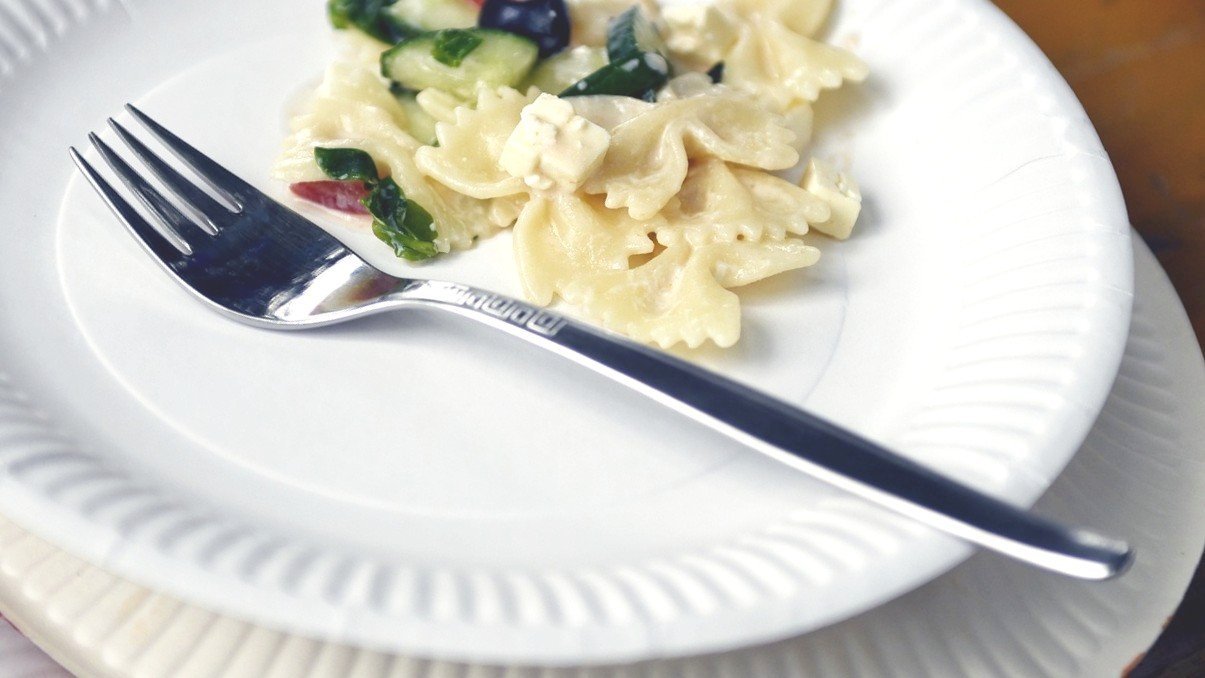Are Paper Plates Compostable?

Paper plates are very convenient single-use items, mostly used by event organizers or for outside activities like picnics. Unfortunately, they contribute a lot of waste, and disposing of them properly is important to reduce impact.
Most paper plates are biodegradable and some are even compostable. It’s important to remember that everything is biodegradable because everything breaks down eventually, but how long it takes and what it breaks down into is more important.
Are paper plates compostable?
You can get several types of paper plates. Those used for crafts are compostable and recyclable because they don’t have a plastic coating.
Even if you eat off of ordinary paper plates without coating, it’s important to remember that these can’t be recycled due to being contaminated with food particles.
The good news is that these paper plates are perfect for composting! They are safe to biodegrade in your compost, though they can take up to 180 days to compost in ideal conditions.
Why paper plates are bad for the environment
Even though they’re made of renewable materials, paper plates aren’t eco-friendly.
Single-use items like these contribute to a lot of waste for only one use. In 2000, a report on New York City’s waste stream for the New York City Department of Sanitation estimated that paper plates and cups made up 25,000 tons of waste and should be replaced with reusable plates and refillable cups.
As found in the life cycle assessment, the processing of paper plates contributes a lot to their global warming potential. Manufacturing paper plates involves sourcing material (which contributes to global deforestation when not using recycled paper) and bleaching the pulp. Party sets of paper plates may also be dyed or printed on and companies rarely mention what these are made of, but they’re typically not safe for composting.
A study on The Effect of Plate Material on Food Consumption and Waste by the University of Chicago found that more food waste was generated with disposable paper plates than when using permanent reusable plates. This suggests disposable paper plates are “strongly associated with behavior to stop eating” while reusable plates are associated with clearing the plate of food.
What are the most eco-friendly paper plates?
The worst choice of plates for the environment might seem to be plastic plates, but at least these can be washed and reused many times over. Petroleum-coated paper plates are the most common form of disposable plates and are often bulk-bought in plastic packaging.
Plain paper plates aren’t perfect by themselves either. A life cycle assessment on paper plates found that “the processing stage was identified to contribute the most to the [global warming potential]”. This study compared them to leaf plates, an eco-friendly disposable plate. These might be the future of single-use plates, but in the meantime, there are other choices for those wanting to ditch paper plates altogether.
Some eco-friendly alternatives to paper plates include ceramic or silicone plates, though these may not be as convenient to carry due to being heavier and possibly breakable. Reusable kitchenware like beeswax wraps and silicone food bags are ideal for containers, but they can also be eaten from, depending on what goodies you’re bringing to the party!
